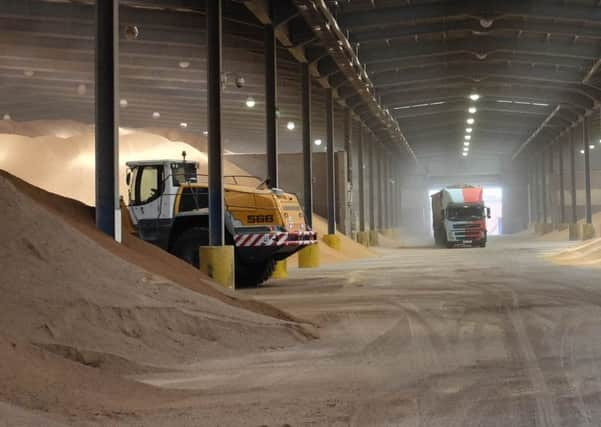Volatility in commodity markets


Early spring saw soya prices ease to the lowest level for several years as the arrival of another huge South American crop weighed on the market.
A few weeks of heavy rain at harvest time hit yields in Argentina reducing soybean production by around 5% or 3 to 4 million tonnes.
Advertisement
Hide AdAdvertisement
Hide AdAreas of Brazil were also hit by drought leading the USDA to cut world production by 3%. Market sentiment changed very quickly as the trade began to focus on the potential negative impact the forming La Nina could have on US yields this year and in South America next spring. US futures rallied $150 by the start of June pushing spot soya prices up by £100 per tonne. The effect of the Brexit result on June 23rd was an immediate devaluation of sterling and a 10 to 15% increase in the price of feed materials depending on whether they were traded in euros or dollars.
However much of the summer requirements had been covered by forward contracts in advance of these phenomenon and local farmers have enjoyed considerably reduced feed costs in recent months.
Initial concerns over hot and dry conditions in the US this summer didn’t materialise and the US is now set to harvest another record soybean crop. The expected yield is close to 50 bu/acre up from 48 last year and 47.6 in 2014. Harvesting will begin later this month and the markets are already reflecting a bumper crop with meal trading close to 300 dollars per short ton – back from 430 dollars just a few months ago. Although prices are not as low as they were in the spring, soymeal futures at $300 per ton has represented good value over the past number of years and with world demand for soybeans continuing to grow downside from current levels is limited. When converted into sterling at today’s exchange rates they would still represent a higher level than the summer contracts and winter feed prices are likely to need some upward correction to reflect the current protein costs.
Bumper crops are also the order of the day in the grain markets with lower wheat yields in France and England more than compensated by increases in the Baltic States, Ukraine and most notably Russia. The USA will also be a big contributor to world grain stocks this year as they project a record corn crop. This pressurises the market and prices are back to the level of 10 years ago before the ethanol boom in the USA. While a third of US corn still goes into ethanol production this demand has peaked and much of the increased production will be fed to dairy cows to further fuel the increase in US milk production. There is little scope for European consumers to benefit from any further reductions in the US corn market as current prices are very close to the threshold for EU levy on maize imports.
Advertisement
Hide AdAdvertisement
Hide AdOther materials have found more support at current levels – Reduced rapeseed production in France and Germany after excessive rains in May/June have supported seed prices and reduced crush margins leaving rapeseed less attractive against soya in feed rations.
Corn by-products from North America are another valuable source of protein for ruminant diets and these markets have been led lower by US corn and soya over recent months but downside now appears limited.
These commodities could well suffer from the logistical challenges of moving the vast tonnages of corn and soya to the ports. There are only so many trucks, rail cars and river barges available and the by- products will be at the back of the queue when it comes to securing transport. If barge rates on the Mississippi get too expensive more of this material could be diverted from the export channel into the domestic market in the area where it is produced.
Soya Hulls too are enjoying an increased interest. This material is exported mainly from Argentina and has become popular as an ingredient in ruminant diets in Ireland, the UK and Holland. New demand has emerged this year from Morocco which has lost 70% of its grain harvest and South Africa which is suffering from long term drought and fodder shortage.